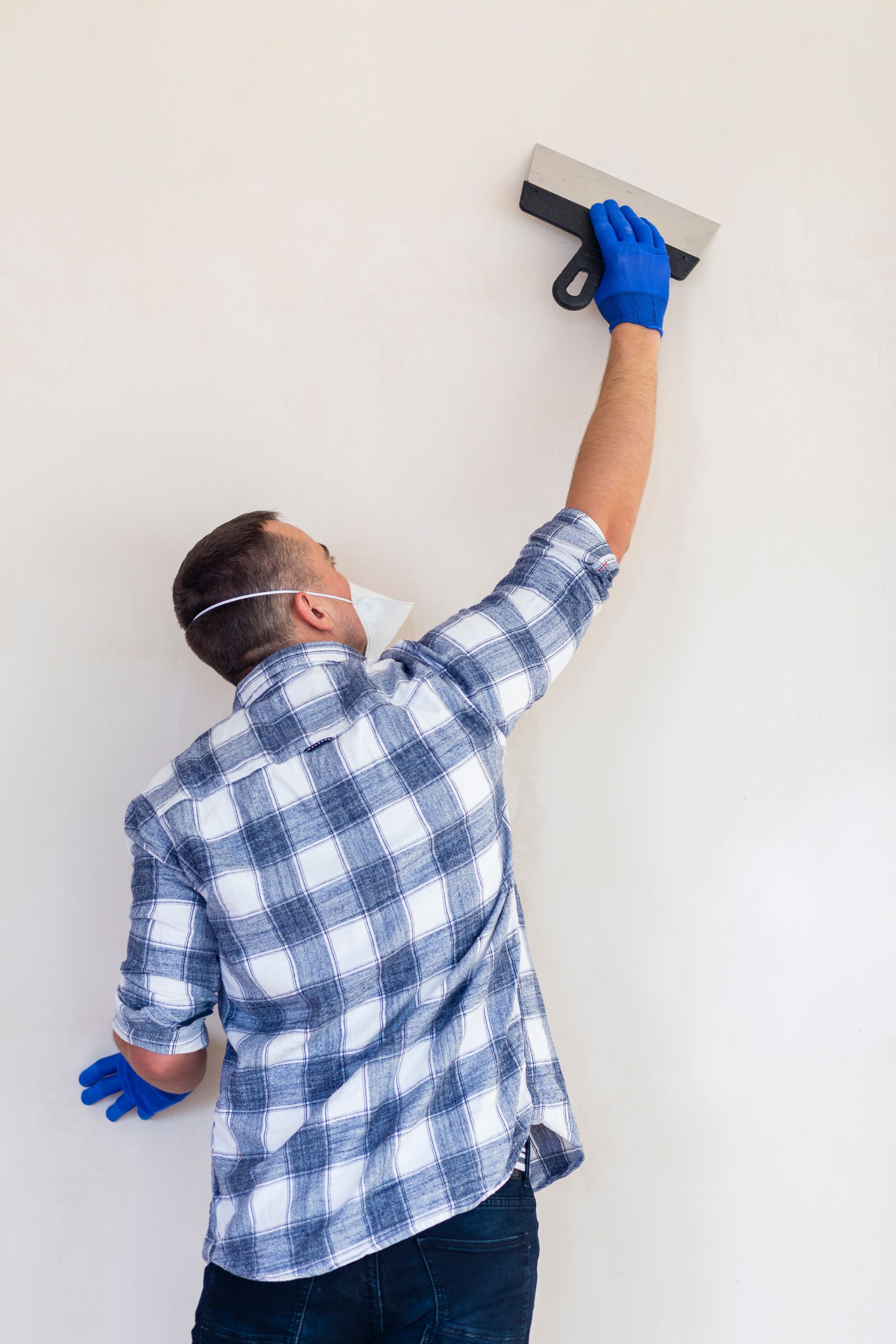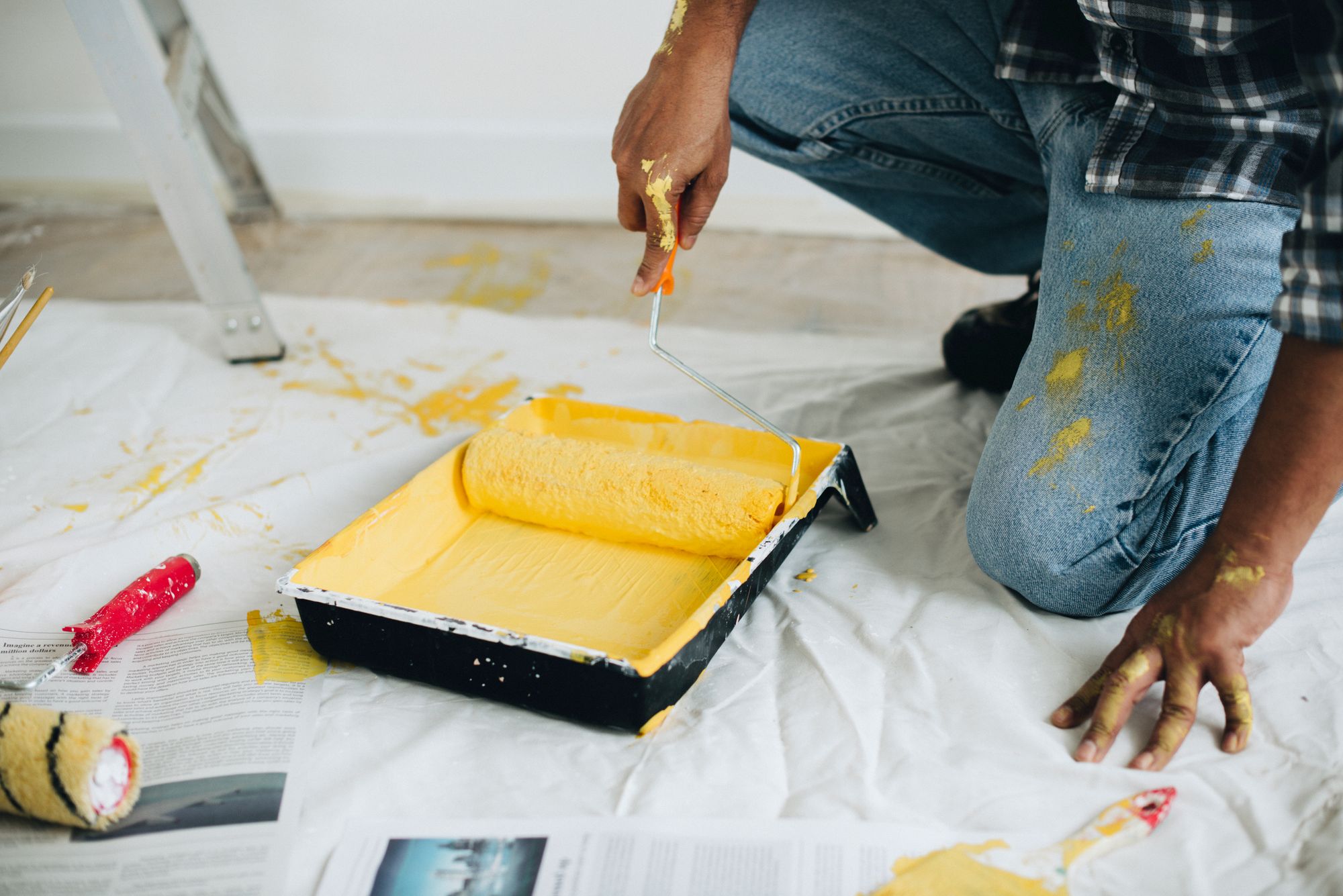Table of Contents
- Introduction
- Understanding the Role of a Texas Painting Contractor
- Step-by-Step Guide to Starting a Painting Contractor Career
- Texas Licensing Requirements
- Texas Painting Certification
- Types of Texas Painting Certification
- Cost implication of kickstarting a painting Contractor in Texas
- Painting Contracting Career Tips
- The Importance of Training and Continuous Learning
- Conclusion
Key Takeaways
- The painting contractor industry in Texas offers a promising career path with a high demand for skilled professionals.
- The role of a Texas painting contractor involves various duties and responsibilities, requiring specific skills and training.
- Starting a painting contractor career involves several steps, including acquiring necessary training, gaining experience, and establishing oneself in the industry.
- Texas has specific licensing requirements for painting contractors that include meeting certain educational criteria, passing an exam, and fulfilling experience requirements.
- Earning a painting certification in Texas can enhance a contractor's credibility, increase job prospects, and potentially elevate earning potential.
- Being successful in this career path involves more than just technical skills. Networking, continuous learning, and maintaining high-quality standards are crucial.
- Ongoing training and learning are vital in the painting contractor industry to stay updated with the latest techniques, safety standards, and industry trends.
- Pursuing a career as a painting contractor in Texas requires commitment and dedication, but the rewards can be significant for those willing to put in the effort.
Introduction
Have you ever marveled at the transformative power of a fresh coat of paint? The ability to turn drab walls into vibrant spaces is a skill that's highly sought after, particularly in Texas where the construction and housing sectors are booming. Welcome to the promising world of painting contractors!
In Texas, the painting contractor industry is experiencing significant growth, driven by the ever-increasing demand for residential and commercial property renovations. As more individuals and businesses understand the value of professional painting services in enhancing property value and aesthetic appeal, the demand for skilled painting contractors has skyrocketed.
Choosing to pursue a career as a painting contractor in Texas not only offers the opportunity to tap into a thriving market but also provides the chance to create meaningful, visible change in people's living and working environments. The potential benefits are immense - from the satisfaction of delivering high-quality work to the financial rewards that come with it.
In this guide, we delve into the steps to start a painting contractor career in Texas, the licensing requirements, and certification process. Whether you're a novice or a seasoned professional looking to formalize your skills, this guide is your stepping stone to a successful painting contractor career.
Understanding the Role of a Texas Painting Contractor
A painting contractor's role goes beyond merely applying a coat of paint to a wall. This profession requires a diverse set of skills, thorough knowledge of materials and techniques, and an eye for detail.
Painting contractors in Texas are typically responsible for a wide array of duties. These include preparing surfaces for painting by cleaning, scraping, or sanding as necessary, selecting and mixing the right paints and finishes, and applying them with precision. They must also provide accurate cost estimates, manage timelines, and ensure safety protocols are adhered to at all times.
Beyond the technical aspects, painting contractors need excellent communication and customer service skills. They interact closely with clients, architects, and interior designers to understand their vision and translate it into reality. For example, a client may desire a faux finish for a unique aesthetic appeal in their home. It's the contractor's job to understand this vision, provide expert advice on the best techniques to achieve it, and deliver the final result to the client's satisfaction.
In terms of job market, the Bureau of Labor Statistics reports that opportunities for painting contractors are expected to grow by 6% from 2018 to 2028. In Texas, the demand is even higher due to the significant growth in the construction industry. According to the Texas Workforce Commission, construction jobs, including painting contractors, are projected to grow by 17.2% from 2016 to 2026 in the state.
Being a painting contractor in Texas requires a blend of technical skills, creativity, and interpersonal abilities. It's a role for those who enjoy working with their hands, solving problems, and bringing spaces to life with color and texture. The high demand and growth potential make it an attractive career choice for those willing to learn and master the craft.

A Day in the Life of a Texas Painting Contractor
A day in the life of a Texas painting contractor begins early, often before the sun rises, to prepare for the day ahead. After checking the day's schedule, the contractor reviews project plans, ensuring all necessary materials are loaded into their vehicle. Arriving at the job site, the morning starts with a team huddle to discuss the day's objectives, safety reminders, and address any concerns.
The morning hours are typically spent on meticulous surface preparation—sanding, caulking, and priming—to ensure a flawless finish. As the day progresses, the contractor oversees the painting process, moving between projects to monitor progress, provide technical guidance, and maintain quality control.
Midday might involve client meetings to discuss ongoing projects, provide updates, or bid on new jobs. These interactions require clear communication, an understanding of client needs, and the ability to provide realistic timelines and cost estimates.
The afternoon is often the most labor-intensive, with the bulk of painting work being done. The contractor balances their time between hands-on painting and administrative tasks, such as invoicing, scheduling, and ordering supplies.
As the day winds down, the contractor reviews the day's work with their team, providing feedback and planning for the following day. The job isn't done until the work area is clean and the client is satisfied with the progress made.
Finally, the contractor dedicates time to continuing education, staying current with industry trends, new materials, and technologies that can enhance efficiency and outcomes.
Skillset Breakdown
- Technical Skills:
• Surface Preparation: Understanding the nuances of surface types and the best methods for preparation.
• Paint Application: Mastery over various application techniques (brush, roller, sprayer) for different finishes.
• Color Theory: Knowledge of color theory to provide clients with advice on color schemes and finishes.
• Safety Protocols: Adherence to safety standards and regulations to ensure a safe working environment.
Development Tip: Enroll in workshops and online courses focusing on advanced painting techniques and safety certifications. - Business Skills:
• Project Management: Efficiently managing timelines, resources, and team members to ensure projects are completed on time and within budget.
• Financial Management: Skillful handling of budgets, invoicing, and financial planning to maintain profitability.
• Client Relations: Building and maintaining strong relationships with clients through clear communication and exceptional service.
• Marketing: Understanding the principles of marketing to attract new clients and grow the business.
Development Tip: Seek mentorship from established contractors, read business management books targeted at the construction industry, and consider taking business courses online or at a local community college. - Interpersonal Skills:
• Communication: Effective communication with clients, suppliers, and team members to ensure clarity and prevent misunderstandings.
• Problem-Solving: Ability to quickly identify and resolve issues that arise during projects.
• Leadership: Leading by example and motivating the team to achieve high standards of workmanship.
• Adaptability: Being open to changes and capable of adjusting strategies to meet project demands or client requests.
Development Tip: Participate in leadership workshops and team-building activities. Practice active listening and conflict resolution techniques to enhance your interpersonal effectiveness.
A successful painting contractor in Texas blends these technical, business, and interpersonal skills daily to deliver quality work and build a reputable business. Continuous learning and skill development are essential to staying competitive and meeting the evolving needs of clients.
Step-by-Step Guide to Starting a Painting Contractor Career
Starting a career as a painting contractor in Texas is a strategic process that involves acquiring essential skills, gaining requisite experience, and navigating the industry's professional requirements. Here is a detailed guide to help you navigate this exciting career path.
Acquiring Necessary Skills:
• Enroll in painting, construction, or business management courses at a vocational school or community college. Look for programs that offer comprehensive training in painting techniques, safety protocols, and color theory.
• Resource: Search for "vocational painting programs in Texas" on community college websites to find suitable courses.
Apprenticeship:
• Apply for apprenticeships to gain hands-on experience. This is crucial for applying theoretical knowledge in real-world scenarios and learning from seasoned professionals.
• Resource: Visit the Painting and Decorating Contractors of America (PDCA) website for apprenticeship listings.

Gain Experience:
• Work under a licensed painting contractor to fulfill the experience requirement necessary for licensing. Focus on refining your skills and understanding the business aspects of painting contracting.
• Resource: Job boards like Indeed and LinkedIn can be useful for finding employment opportunities with established painting contractors.
Obtain a License (if applicable):
• If aiming to offer broader services or work as a general contractor, consider obtaining a general contractor license. Fulfill the experience requirement, study for, and pass the required examination.
• Resource: The Texas Department of Licensing and Regulation (TDLR) website provides exam study resources and application guidelines.
Start Your Business:
• Develop a business plan, register your business, purchase insurance, and start marketing your services. Networking and quality work will be key to growing your client base.
• Resource: Small Business Administration (SBA) offers guides on starting a business, including planning, legal requirements, and marketing strategies.
Timeline Visualization:
• Year 1-2: Vocational Training or Community College Education
• Year 2-4: Apprenticeship/On-the-Job Training
• Year 4-5: Gain Additional Experience, Prepare for Licensing
• Year 5+: Obtain General Contractor License (if applicable), Launch Your Business
Texas Licensing Requirements
Checklist for Licensing (General Contractor License):
• Experience Requirement: Verify you meet the one-year relevant work experience. The applicant must show proof of at least one year of relevant work experience. Additionally, they must demonstrate financial stability, which may involve submitting bank statements or a financial statement prepared by a certified public accountant.
• Application: Complete and submit the license application along with the fee. The applicant should complete the relevant license application form, available on the TDLR website, and pay the application fee. The fee typically ranges between $100-$150, but it's advisable to check the current fees on the TDLR website.
• Examination: After the application is processed, the applicant is required to pass an exam that tests their knowledge of trade skills, building codes, and law. The cost of the exam varies but is typically around $60-$75. Utilize study guides and materials available on the TDLR website.
• Obtain Insurance: Secure general liability insurance with the required coverage amounts. The applicant must provide proof of general liability insurance with a minimum coverage of $100,000 per person and $300,000 per occurrence, and $100,000 for property damage.
• Annual Renewal: Once the license is obtained, it's valid for one year and must be renewed annually. Keep track of your renewal dates and complete any required continuing education. The renewal fee is usually around $200.
Clarification on General Contractor License: In Texas, painting contractors specifically may not need a painting contractor's license to operate. However, obtaining a general contractor license might be beneficial for those looking to expand their services beyond painting to include other home improvement or construction tasks, which do require licensure. It adds credibility and may be required by some clients or larger projects. Evaluate your business goals and services to determine if a general contractor license aligns with your professional needs.
Texas Painting Certification
In the painting industry, having a certification can significantly elevate your credibility and job prospects. In Texas, the Painting and Decorating Contractors of America (PDCA) offers a comprehensive certification program.
The PDCA certification process has four stages:
1. Application: You begin by submitting an application form along with a fee. This also requires proof of a minimum of 1-3 years of professional painting experience.
2. Examination: After your application is approved, you'll need to pass a written examination. The exam tests your knowledge on safety regulations, work standards, paint technology, and business practices.
3. Field Review: Once the written examination is passed, a PDCA staff member will conduct a field review. This involves observing you on the job to ensure you're following PDCA standards.
4. Certification: If you pass the field review, you'll be awarded your certification. This certification must be renewed annually, which requires ongoing professional development.
Getting certified by an industry-recognized body like PDCA not only validates your skills and knowledge but also enhances your marketability. Clients often prefer certified contractors, recognizing that they adhere to industry standards, use best practices, and are committed to continuous learning. As such, earning a painting certification can significantly contribute to your career advancement in Texas.

Types of Texas Painting Certification
While Texas does not have specific state-administered painting certifications, several industry-recognized bodies offer certifications that Texas painting contractors can obtain. These include the Painting and Decorating Contractors of America (PDCA) and the National Association of Corrosion Engineers (NACE). Here's a detailed look at these certifications:
1. PDCA Certification
The Painting and Decorating Contractors of America (PDCA) offers a comprehensive certification program that is recognized across the nation, including Texas. The certification process involves the following steps:
- Submit an application form to the PDCA, along with the required fee and proof of professional painting experience (1-3 years minimum).
- Upon approval of your application, you'll need to pass a written examination. This exam tests your knowledge on safety regulations, work standards, paint technology, and business practices.
- Once the written examination is passed, a PDCA staff member conducts a field review. This involves observing you on the job to ensure you're following PDCA standards.
- If you pass the field review, you'll be awarded your certification. This certification must be renewed annually, which requires ongoing professional development.
2. NACE Coating Inspector Certification
The National Association of Corrosion Engineers (NACE) offers a Coating Inspector Program (CIP) certification. This certification is beneficial for painting contractors who work on projects that require extensive knowledge about protective coatings and corrosion control. The certification process is as follows:
- Enroll in the NACE CIP Level 1 course. This is a six-day intensive course that covers coating types, inspection techniques, corrosion theory, and more.
- After completing the course, you'll have to pass an exam to receive your NACE CIP Level 1 certification.
- For Level 2 certification, you must have at least 2 years of work experience in the field, complete the Level 2 course, and pass the exam.
- Level 3 certification requires a minimum of 5 years of work experience, successful completion of the Level 3 Peer Review exam, and a demonstration of advanced inspection skills.
3. Society for Protective Coatings (SSPC) Certification
The SSPC offers a Protective Coating Inspector (PCI) Program. This program provides comprehensive training on all aspects of coating inspection and the use of relevant inspection instruments. The certification process includes:
- Enroll in the PCI Level 1 course, which involves classroom training and practical exercises.
- Once you've completed the course, you must pass an exam to receive your PCI Level 1 certification.
- Level 2 certification requires successful completion of the Level 2 course and passing the exam. This level focuses more on advanced inspection procedures and techniques.
- Level 3 certification is for those looking to become program managers or consultants. It requires passing a comprehensive oral exam in addition to the Level 3 course and written exam.
Each of these certifications has its own unique advantages and specializations. They help to validate your skills, enhance your credibility, and can significantly improve job prospects. Clients often prefer certified contractors as it assures them that the contractors are adhering to industry standards, utilizing best practices, and are committed to continuous learning. Therefore, pursuing a painting certification can be a significant career investment for painting contractors in Texas.
Comparison Table of Certifications for Painting Contractors:
| Certification | Issuing Organization | Benefits | Requirements | Costs |
|---|---|---|---|---|
| PDCA Certification | Painting and Decorating Contractors of America (PDCA) | Enhances credibility, provides industry recognition | 1-3 years of experience, passing written exam, field review | Application fee varies, annual renewal |
| NACE Coating Inspector | National Association of Corrosion Engineers (NACE) | Specializes in protective coatings, recognized in industrial projects | Completion of Level 1 course, passing exam, work experience for higher levels | Level 1 course and exam approx. $2,000 |
| SSPC Protective Coating Inspector | The Society for Protective Coatings (SSPC) | Focuses on coating inspection, comprehensive knowledge of coatings application | Completion of PCI Level 1 course, passing exam, work experience for higher levels | Level 1 course and exam approx. $1,500 |
How-to Guides for Obtaining Certification:
- PDCA Certification:
• Application: Submit an application to PDCA with proof of 1-3 years professional painting experience.
• Preparation: Study for the written exam covering safety regulations, work standards, and paint technology.
• Examination: Pass the written exam.
• Field Review: Successfully complete a field review by a PDCA staff member.
• Certification: Upon passing, receive your certification. Renew annually with professional development. - NACE Coating Inspector:
• Enroll: Sign up for the NACE CIP Level 1 course.
• Study: Complete the six-day course covering coating types, inspection techniques, and corrosion theory.
• Examination: Pass the Level 1 exam.
• Experience: Gain required work experience for higher levels.
• Advance: Progress through Level 2 and Level 3 with additional courses and exams. - SSPC Protective Coating Inspector:
• Enroll: Register for the SSPC PCI Level 1 course.
• Learn: Complete the course, focusing on coating inspection and the use of relevant instruments.
• Examination: Pass the Level 1 exam.
• Experience: Accumulate work experience for advanced levels.
• Progress: Attain Level 2 and Level 3 certifications through further coursework and exams.
Cost Implication of Kickstarting a Painting Contractor in Texas
Starting a painting contractor business in Texas, like any other business, involves various costs. These costs can be broadly categorized into startup costs and ongoing costs. Here's a breakdown:
Startup Costs:
1. Business Registration: Registering your business in Texas involves a filing fee. The cost depends on the type of business structure you choose. For instance, forming an LLC in Texas costs about $300.
2. Insurance: Liability insurance is crucial for a painting contractor. This protects your business from claims resulting from injuries or property damage that might occur during a job. The cost of insurance varies based on factors like the size of your business and the level of risk involved, but it can range from $400 to $1,500 per year.
3. Equipment: You'll need to invest in quality painting equipment such as brushes, rollers, sprayers, ladders, and safety gear. Depending on the quality and quantity of equipment, this can cost between $1,000 to $3,000 initially.
4. Vehicle: Having a reliable vehicle is important for transporting your team, equipment, and supplies to job sites. The cost of a vehicle can vary widely depending on whether you buy new or used.
5. Marketing: Initial marketing expenses might include creating a website, business cards, signage for your vehicle, and advertising. These could cost anywhere from $500 to $2,000.
Ongoing Costs:
1. Supplies: You'll need to regularly purchase painting supplies such as paint, primer, caulking, and tape. The cost of supplies will vary based on the size and scope of each job.
2. Marketing: Regular marketing efforts are important for attracting new clients. This might include online advertising, print ads, or direct mail campaigns.
3. Certifications and Training: Keeping up with industry standards and improving your skills through ongoing training can be another recurring cost, though this is also an investment in your business's success.
4. Operational Expenses: These include fuel for your vehicle, maintenance of your equipment, utilities, and potential office space rent if you choose not to operate from home.
Funding Resources:
• Small Business Loans: Banks and credit unions offer various loan options for startups. The SBA (Small Business Administration) also offers loan programs for entrepreneurs.
• Grants: Some organizations and government entities provide grants for small businesses in specific industries, including construction and trades.
• Scholarships: Trade schools and professional associations often offer scholarships for students pursuing careers in skilled trades.
• Investors: Consider seeking out investors who are interested in the construction and home improvement industries.
Remember, these are estimated costs and actual costs can vary based on various factors. It's important to conduct a detailed cost analysis and have a solid financial plan in place before starting your painting contractor business in Texas.

Painting Contracting Career Tips
Starting a career as a painting contractor in Texas can be a rewarding and profitable venture. However, like any other profession, it requires careful planning, continuous learning, and dedication. Below are some insightful tips to help you succeed in this field:
1. Obtain Necessary Training and Certification: While Texas doesn't require a specific license for painting contractors, getting a general contractor license can add credibility to your profile. Look into industry-recognized certifications like those from the PDCA, NACE, or SSPC. These programs not only enrich your knowledge but also demonstrate your commitment to professionalism to potential clients.
2. Networking: A strong network can be a significant asset in the painting contracting business. Attend industry events, trade shows, and join professional organizations like the PDCA. This provides opportunities to meet other professionals, learn about the latest trends and technologies, and could lead to business referrals.
3. Continuous Learning: The painting industry is continually evolving, with new techniques, materials, and safety regulations being introduced regularly. Stay current by attending workshops, seminars, and courses. This will not only improve your skills and knowledge but also enable you to provide your clients with the best and most up-to-date services.
4. Quality Over Quantity: When starting, there might be a temptation to take on as many jobs as possible to increase revenue. However, it's essential to focus on delivering high-quality work. Satisfied clients are more likely to recommend you to others, enhancing your reputation and leading to more business in the long run.
5. Invest in Good Equipment: Quality tools and equipment are critical for a painting contractor. Good brushes, rollers, sprayers, and other tools can help you work more efficiently and achieve better results. While it might be tempting to save money on cheaper alternatives, investing in good equipment will pay off in the long run.
6. Business Management Skills: As a painting contractor, you're not just a painter; you're a business owner. Understanding basics like creating a business plan, marketing your services, managing finances, and customer service can significantly impact your success. Consider taking business management courses or seeking advice from established professionals in the field.
7. Insurance and Legal Obligations: Ensure you have the necessary insurance coverage, like liability insurance, to protect your business from potential risks. Also, familiarize yourself with the legal obligations you must fulfill, such as permits needed for specific jobs or adhering to safety standards.
8. Customer Service: Good customer service is often as important as the quality of your work. This includes listening to the client's needs, being punctual, maintaining clear communication, and ensuring the job site is clean and tidy. A happy customer can be a powerful marketing tool as they are likely to recommend your services to others.
9. Build a Strong Online Presence: In today's digital era, having a strong online presence is crucial. Develop a professional website showcasing your work, client testimonials, and services. Utilize social media platforms to reach a broader audience and engage with potential clients.
10. Adhere to Safety Practices: Safety should always be a prime concern. Ensure you're well-versed with safety regulations and practices, like proper ventilation, handling of hazardous materials, and use of personal protective equipment.
Starting a painting contracting career can be challenging, but with the right approach, dedication, and persistence, you can build a successful business. Remember, the key to success lies in continual learning, maintaining high-quality standards, and putting your clients' needs first.
The Importance of Training and Continuous Learning
In the dynamic world of the painting contractor industry, ongoing training and continuous learning are essential for success. They help professionals stay up-to-date with the latest techniques, materials, safety regulations, and industry standards. Acquiring new skills and knowledge not only improves the quality of work but also enhances one's marketability, leading to better job opportunities and higher client satisfaction.
Training Opportunities in Texas
Texas offers a plethora of opportunities for training and development in the painting industry. Institutions like the Painting and Decorating Contractors of America (PDCA) Texas chapter and various community colleges across the state offer relevant courses and workshops. Additionally, industry-recognized certifications from bodies like PDCA, NACE, and SSPC provide comprehensive training programs.
Embracing continuous learning and making the most of these opportunities can significantly contribute to a successful career as a painting contractor in Texas.
In conclusion, starting a painting contractor career in Texas is a rewarding venture that requires careful planning, continuous learning, and dedication. Aspiring painting contractors should focus on obtaining necessary training and certifications to enhance their skills and credibility. Networking plays a crucial role in creating opportunities and learning about industry trends.
Quality should always be prioritized over quantity, and investing in good equipment can significantly improve work efficiency and results. As a painting contractor, one must also develop business management skills, understand insurance and legal obligations, and offer outstanding customer service. In today's digital era, building a strong online presence is also essential.
The cost of kickstarting a painting contractor business includes both startup costs like business registration, insurance, equipment, and a vehicle, and ongoing costs like supplies, marketing, certifications, training, and operational expenses.
Taking advantage of the various training opportunities available in Texas can help painting contractors stay up-to-date with the latest industry standards and improve their marketability.
Starting a painting contracting career can be challenging, but with the right approach, dedication, and persistence, you can build a successful business. Remember, the key to success lies in continual learning, maintaining high-quality standards, and putting your clients' needs first. It's time to take the first step towards your painting contractor career in Texas. Embrace the journey and look forward to the rewards that come with hard work and commitment.






